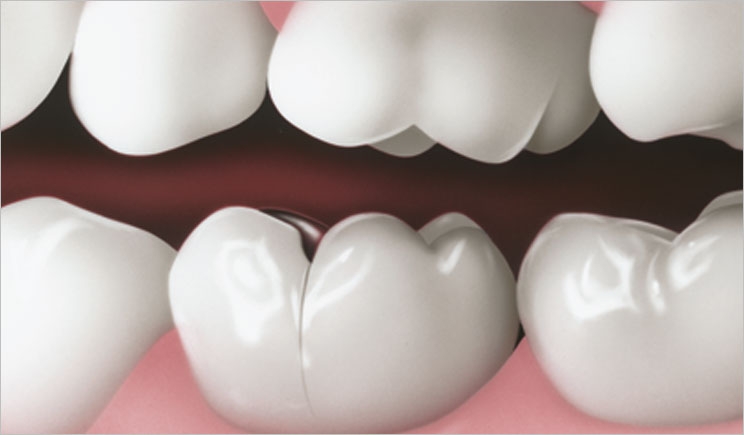 A new study shows that internal stress works against crack propagation and increases the resistance of biostructure. An interdisciplinary team led by scientists of Charite Universitaetsmedizin Berlin looked at various aspects of dentin. As part of the study, engineers used internal stresses to strengthen materials for the specific technical purposes. Apparently evolution has been aware of this, which is why this has been put to use in natural teeth. Human teeth are not capable of repairing damage, which is unlike bones because bones are partially made of living cells. Human teeth are instead made of dentin, which is a bonelike material comprising mineral nanoparticles. The nanoparticles are embedded in tightly connected collagen fibers. This is why teeth are tough and damage-resistant. But prior to this study, it was unclear as to how crack propagation in teeth could be stopped. Researchers from Charite Julius-Wolff-Institute, Berlin have been working with partners from Materials Engineering Department of Technische Universitaets Berlin, MPI of Colloids and Interfaces, Potsdam and Technion – Israel Institute of Technology, Haifa, to further explore these biostructures. They conducted experiments in the mySpot BESSY facility of HZB in Berlin and examined the local orientation of the mineral nanoparticles using the nanoimaging facility of the European Synchrotron Radiation Facility (ESRF) in Grenoble, France. The researchers determined that when the tiny collagen fibers shrink, the result is that the attached mineral particles are more compressed. They used changes in humidity to pinpoint how stress shows up in the mineral in the collagen fibers. The research team also analyzed the result if the tight, mineral-protein link is damaged by heating. In this case, the dentin in teeth becomes weaker. That’s why it’s crucial for the stress between particles and protein to be balanced to ensure the long-term survival of the teeth. This also shows why artificial tooth replacements may work well but they’re still not the same as regular teeth.
A new study shows that internal stress works against crack propagation and increases the resistance of biostructure. An interdisciplinary team led by scientists of Charite Universitaetsmedizin Berlin looked at various aspects of dentin. As part of the study, engineers used internal stresses to strengthen materials for the specific technical purposes. Apparently evolution has been aware of this, which is why this has been put to use in natural teeth. Human teeth are not capable of repairing damage, which is unlike bones because bones are partially made of living cells. Human teeth are instead made of dentin, which is a bonelike material comprising mineral nanoparticles. The nanoparticles are embedded in tightly connected collagen fibers. This is why teeth are tough and damage-resistant. But prior to this study, it was unclear as to how crack propagation in teeth could be stopped. Researchers from Charite Julius-Wolff-Institute, Berlin have been working with partners from Materials Engineering Department of Technische Universitaets Berlin, MPI of Colloids and Interfaces, Potsdam and Technion – Israel Institute of Technology, Haifa, to further explore these biostructures. They conducted experiments in the mySpot BESSY facility of HZB in Berlin and examined the local orientation of the mineral nanoparticles using the nanoimaging facility of the European Synchrotron Radiation Facility (ESRF) in Grenoble, France. The researchers determined that when the tiny collagen fibers shrink, the result is that the attached mineral particles are more compressed. They used changes in humidity to pinpoint how stress shows up in the mineral in the collagen fibers. The research team also analyzed the result if the tight, mineral-protein link is damaged by heating. In this case, the dentin in teeth becomes weaker. That’s why it’s crucial for the stress between particles and protein to be balanced to ensure the long-term survival of the teeth. This also shows why artificial tooth replacements may work well but they’re still not the same as regular teeth.
Todays Dental News
Research Team Looks to Determine why Teeth Crack
siteground
June 22, 20151 Mins read1.2k Views

0
Shares
0
Shares











